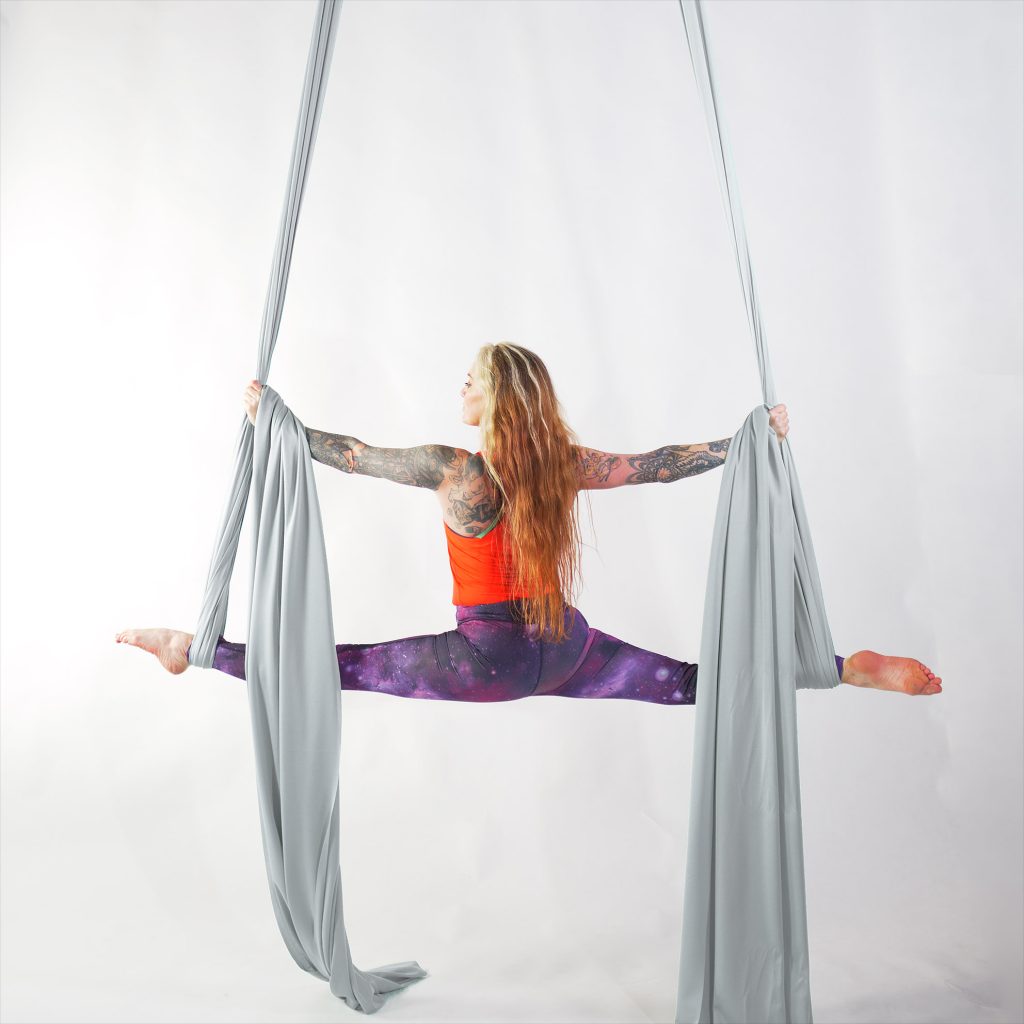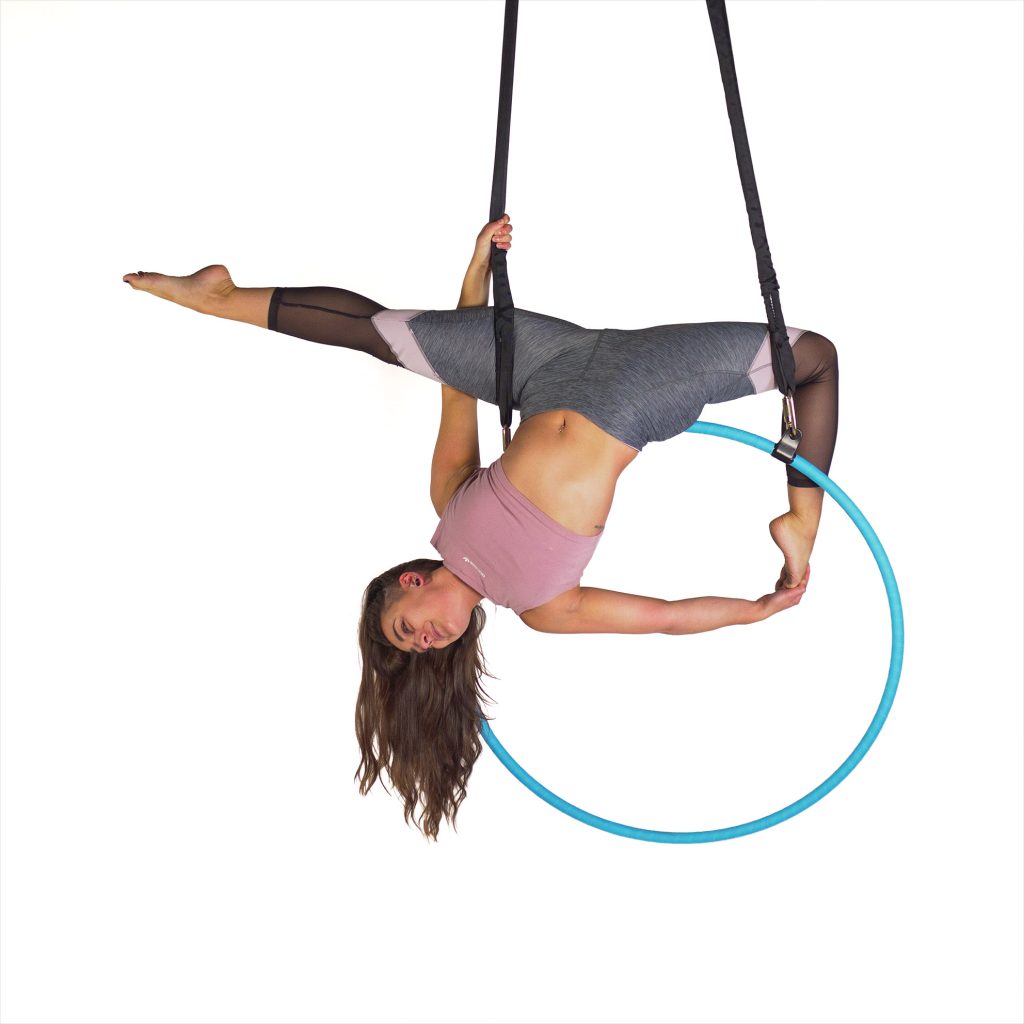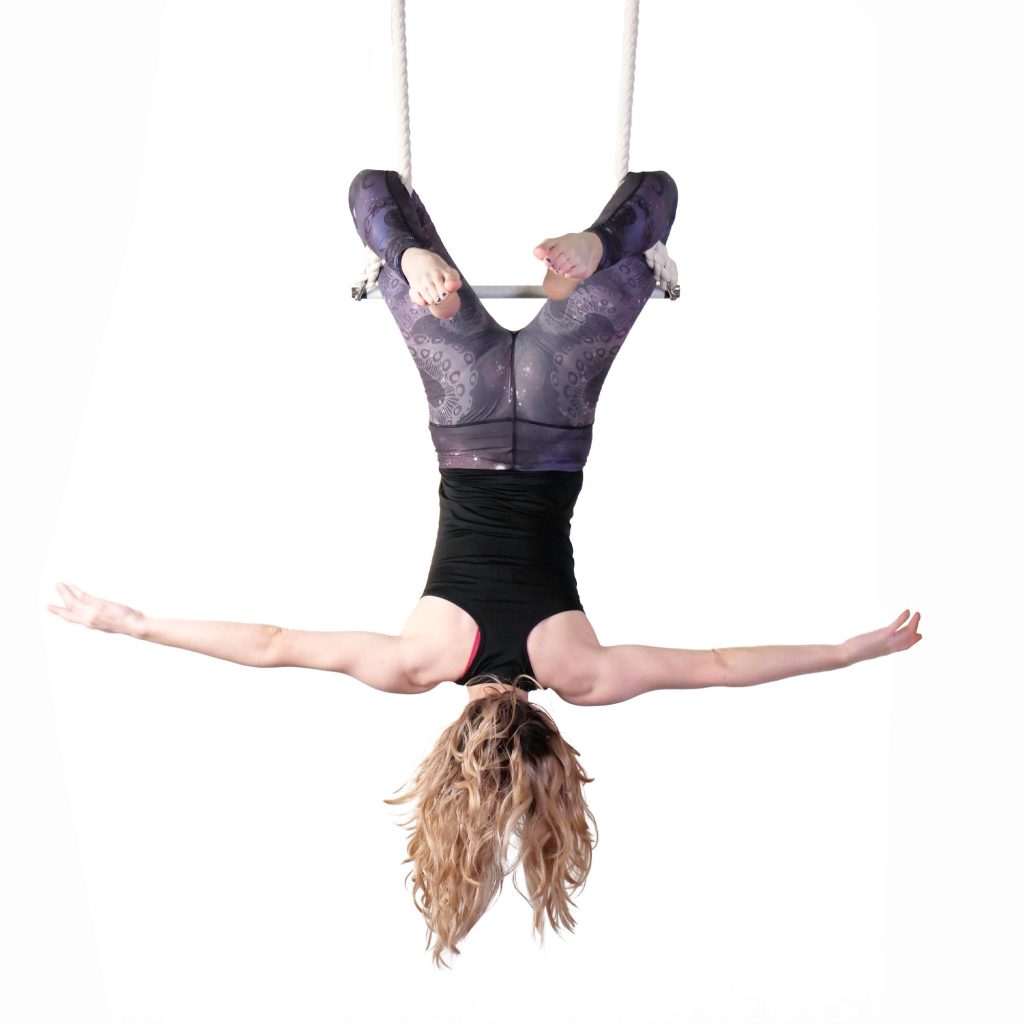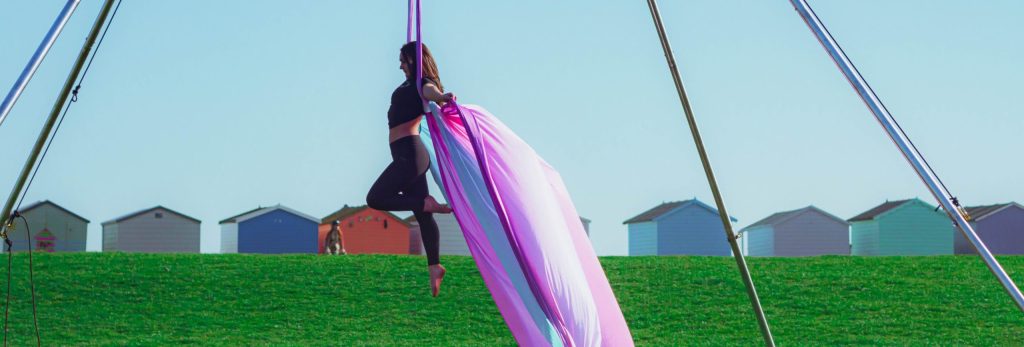Choosing Equipment
With so many different options out there it can be confusing for beginners or parents to know what is the right purchase for them or their child. This blog will go through some of the differences between them as well as some pros and cons of each.
Aerial Silks

We sell two types of Aerial silks.
Prodigy
- Our Prodigy range is a low stretch and higher width material. This is particularly useful at lower heights as you will be able to get more out of those climbs and make the most of the space. These silks have a small amount of bounce in them meaning there is still some cushioning for drops but are easier to climb. The prodigy silks are also wider than the average at 2.8m/110 inches making them a great option for cocoons or even turning into yoga/aerial hammock!
- WLL: 220kg
- Average downward stretch: 6% (low)
- The Prodigy brand also comes in a stunning multicolour range! These fabrics have a nice shine while having more grip than our single colour Prodigy Aerial Silks.
- WLL: 170kg
- Average downward Stretch: 7% (low)
(WLL= Working load limit)
Firetoys
- Our own Firetoys silks are a medium stretch making them great for drops and more advanced moves. Their stretchiness can mean climbs are more energy zapping so may not be ideal for complete beginners or shorter heights. These silks measure 1.5m/59 inches so are almost half the width of the prodigy silk. Please note due to the direction of the stretch these are not suitable to use as aerial hammocks.
- WLL: 128kg
- Average downward stretch: 10% (medium)
- We now also have youth silks! Same firetoys fabric but at a 125cm width, great for smaller hands. As kids are generally lighter, the medium stretch acts more like a low stretch for their weight. Our in house Youth silks performer Jess (age 11) says she prefers the feels of FT silks over Prodigy ones.
What length do I need?
The general calculation for working out silk length is to measure your available height, double it and add 2m. This is because our silks are listed as the total length from end to end, not the working (folded) length. It's worth noting some manufacturers may list theirs differently. You also need to take into consideration any rigging you may have (around 10cm each) and minus that from the total as well.

Aerial Hoops
We have a range of aerial hoops from the standard 1 point to our speciality pieces like the crescent moon!

Here's a rundown of the different types.
- 1 point - A single tab hoop most often found in studios. A range of moves can be done, in, above and below the hoop. A swivel can also be attached for easy spinning.
- 2 point - The two point has two tabs spaced out on the top of the hoop opening up moves that you can only do with a 2-point hoop, like Star on Top Bar. These hoops move around slightly less and allow you to perform moves that tip forward and back.
- 0 point - A great option if you're wanting to swap between the 1 and 2 point styles as these can be rigged as either. Simply choke a strop (or 2) directly onto the hoop.
- Shackle - Another versatile choice, similar to our 0 point hoops but with high strength shackles to connect your soft rigging too.
Trapezes

Classic vs Extended bar
Our extended bars are designed for doubles, this extended trapeze has an extra 30cm of the bar at either end.
Trapeze Types
- Cotton classic - Our bounciest rope, great for cushioning drops. 100% cotton means it can curl more tightly around, keeping you more secure in wrapped moves
- Dyna core - With a minimal stretch and no bounce, this style is good for beating and any movement where stability is preferred. Due to this however, drops are not recommended. Also comes in a shackle style.
- Polysafe - Soft and flexible ropes, no bounce and a lighter bar. Shackle style means the ropes can be easily cleaned and replaced.
Shackle trapezes vs thimbles
Shackle trapezes have the benefit of greater mobility and the ability to switch out the ropes or bar. They move with more ease and can take a bit of time to get used to. The fixed thimble trapezes will feel a little more secure but the more rigid elbows can make the trapeze feel less compliant. They also have a heavier bar than the shackle style making rope moves a little harder.
Rope/ Corde Lisse

- Firetoys 3 Ply- Our 3-ply ropes have a good amount of stretch making them great for cushioning drops. Their flexibility means they are also a good option for all types of climbs and wraps. These ropes will stretch out over time, with use, and lose most of the bounce.
- Braided Corde Lisse - The Prodigy Braided Corde Lisse has a little stretch when new, approximately 2.5-3% stretch. This is not as much as a 3-Ply rope but more than a covered rope. This is very comfortable for beginner level drops and good for beats and intermediate level catch and release tricks.
It's important to remember there's no one size fits all when it comes to aerial and your needs will depend on several factors including, the length of time you've been training, personal preferences and what you are used to using. If in doubt ask your aerial instructor what they think is best or contact our team for advice!





